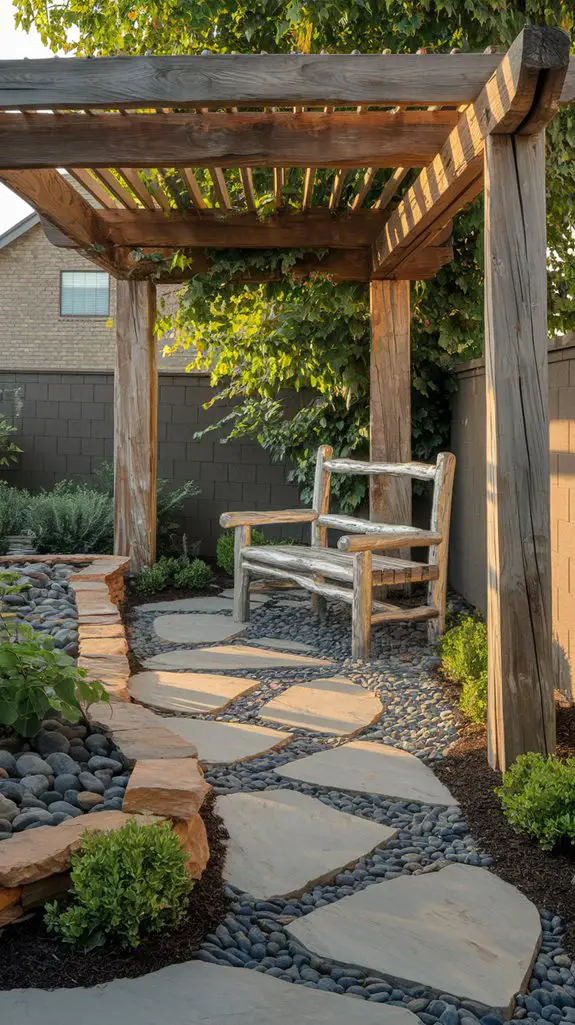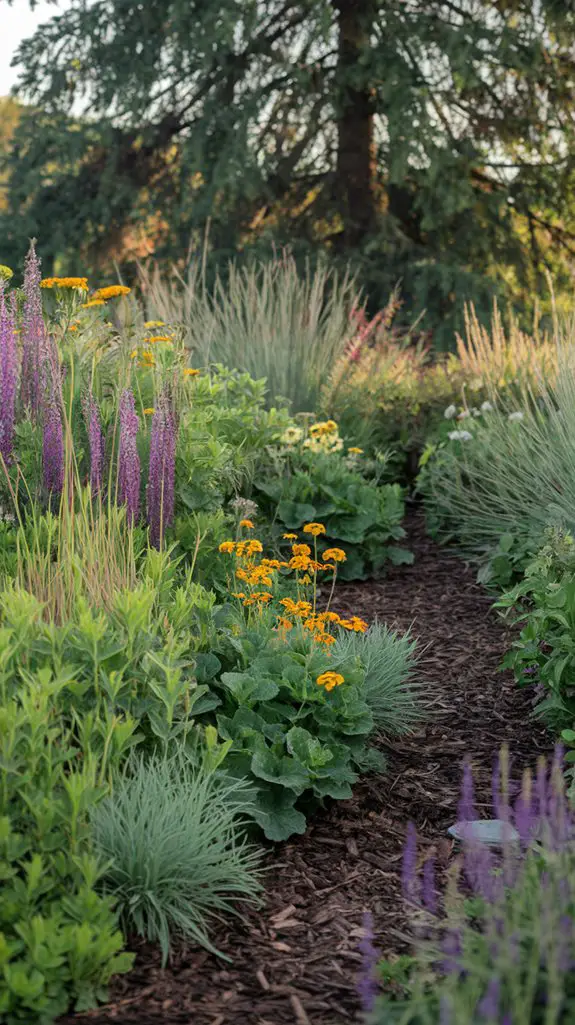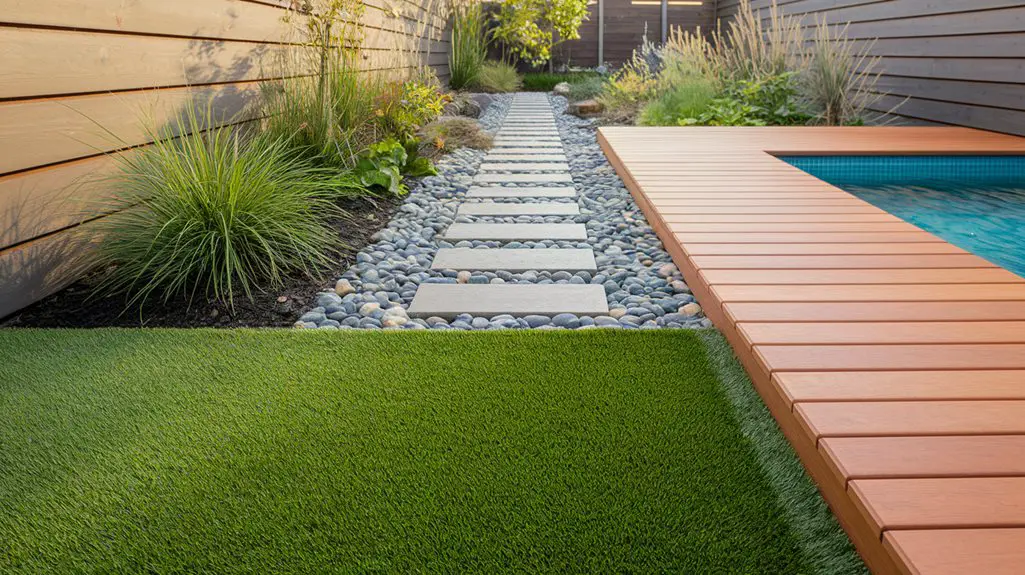When Sara transformed her concrete patio into a permeable paver walkway, she watched rainwater filter naturally into the ground instead of flooding her yard. You’ll find that sustainable landscaping materials not only solve practical problems but also reduce your environmental footprint. Beyond permeable pavers, reclaimed wood and organic mulch offer environmentally conscious alternatives to conventional options. These three materials can revolutionize your outdoor space while supporting local ecosystems.
Permeable Pavers and Gravel for Sustainable Drainage
When rainwater runs off traditional concrete or asphalt surfaces, it carries pollutants directly into storm drains and waterways. By installing permeable pavers or gravel in your landscaping, you’ll create pathways for water to naturally filter through the ground instead. These eco-friendly alternatives allow rainwater to percolate slowly into the soil, reducing erosion and replenishing groundwater supplies. You can choose from various permeable options including recycled plastic grid systems, clay brick pavers, or natural stone arranged with small gaps between units. For driveways and pathways, consider crushed granite or river rock with stabilizing grids underneath. These materials maintain their integrity during heavy rainfall while reducing your property’s environmental impact and potentially lowering municipal stormwater fees. Additionally, using renewable resources in your landscaping can further enhance sustainability efforts.
Reclaimed Wood and Natural Stone Features

Unlike mass-produced synthetic materials, reclaimed wood and natural stone features bring authentic character to your landscape while considerably reducing environmental impact. These elements weather beautifully over time, developing unique patinas that synthetic alternatives can’t replicate. When incorporating these sustainable materials, consider:
- Source reclaimed wood from local demolition projects, barn dismantling, or salvage yards to minimize transportation emissions while preserving historical elements.
- Choose regional stone varieties that don’t require long-distance shipping and naturally complement your local ecosystem.
- Combine both materials in functional features like raised garden beds with stone borders and wooden benches with stone footings for durability.
Additionally, incorporating eco-friendly options into your design can enhance the overall sustainability of your outdoor space. You’ll create a landscape that not only looks timeless but also tells a meaningful environmental story through thoughtful material selection and application.
Native Plant Selections and Organic Mulch Options

Building a truly sustainable landscape requires thoughtful selection of both plants and ground covering materials that work in harmony with your local environment. Native plants thrive with minimal intervention while supporting local pollinators and wildlife. Pair these with organic mulch options to complete your eco-friendly yard. Additionally, using eco-friendly mulch options can enhance the health of your garden while benefiting the environment.
| Native Plant Benefits | Recommended Species | Maintenance Needs |
|---|---|---|
| Drought resistance | Echinacea/Coneflower | Minimal watering |
| Pollinator support | Milkweed varieties | No pesticides |
| Erosion control | Native grasses | Annual cutting |
| Disease resistance | Local wildflowers | Natural growth |
For mulching, you’ll find bark chips conserve moisture excellently, while pine straw works well for acid-loving plants. Compost serves as both mulch and soil amendment, while leaf mold offers a free option if you’re patient enough to collect and process fall leaves.
Conclusion
Your eco-friendly backyard isn’t just a garden—it’s your own Walden Pond experiment. By choosing permeable pavers that breathe like the earth itself, reclaimed wood that tells stories of past lives, and organic mulch that nurtures native plants, you’re creating a sustainable sanctuary. Like the web of life itself, each choice connects to another, transforming your outdoor space into a symbol of stewardship that future generations will thank you for.




